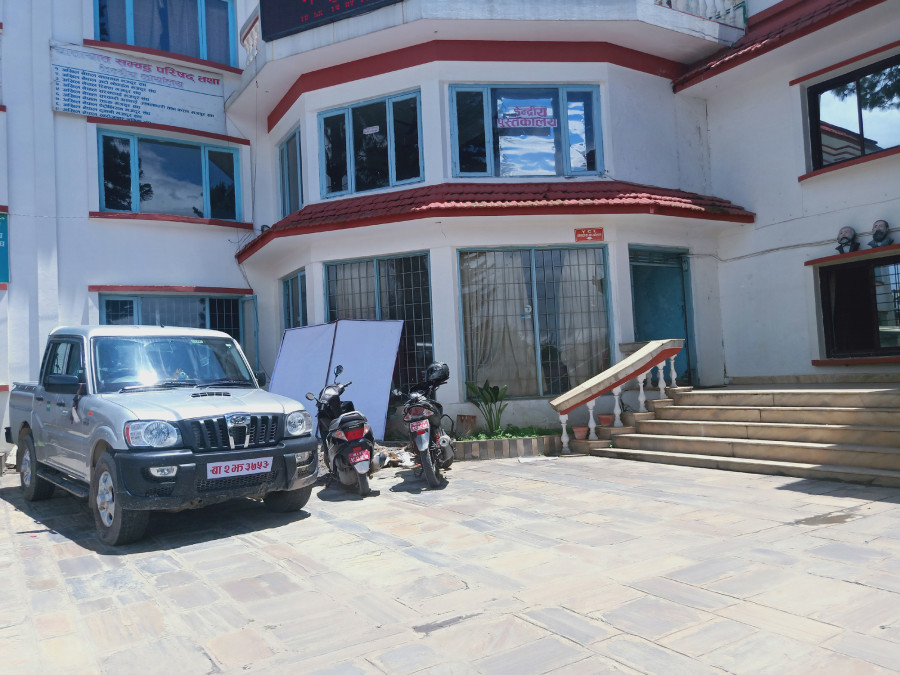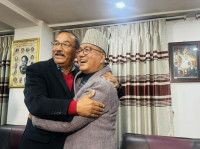Politics
Unified in haste, cracks continue to surface within the ruling party
At a time when the row over school department is yet to settle, a new conflict has flared up in the party’s youth wing
Tika R Pradhan
While the ruling Nepal Communist Party is reeling under a conflict over which of the former two parties is to lead the school department, rift surfaces in its youth wing on the ratio of its central committee members.
As Friday’s meeting of the former office bearers of the UML’s Youth Association Nepal and the Maoist Centre’s Young Communist League held at Parisdanda to settle the issues related to their merger turned sour, some members removed the signboard of the National Youth Association Nepal—the name of the unified communist youth wing.
The party had decided the wing’s name as the National Youth Association-Nepal, its coordinator—Ram Prasad Sapkota—the then YCL chairman and joint coordinator Ramesh Poudel, former chair of the Youth Association Nepal.
The party has set the strength of the new youth association to be 251 but the YAN has 256 members and the YCL has 215 members. While the two separate organisations are struggling to reduce the number, Poudel’s proposal for a 60:40 ratio of composition from the UML and Maoist streams irked the former YCL leaders.
“We had agreed to having a few more members from the Youth Association but the proposal of 60:40 ratio is unacceptable,” said Sapkota. Earlier, the two leaders of the youth wings had agreed to divide the members on equal basis while the YCL agreed to adopt the name and flag of the Youth Association. “However, after the Youth Association backtracked on the agreement, the merger process has been stalled,” said Subodh Sherpali, the YCL general secretary.
On the other hand, joint coordinator Ramesh Poudel claimed that the Youth Association had not agreed to the YCL’s proposal of having 126 members from the UML youth group and 125 from the Maoist group as most of the leaders of Youth Association were against it. But later YCL had proposed five more members from the Youth Association—128, while the former Maoist wing will have 123.
“We have told them that the name and flag of the unified organisation should also be reviewed if they backtrack on the agreement to have equal numbers in the central committee,” said Sherpali. “We had agreed to their name and flag just because they have agreed on equal numbers.”
Maoist members believe that some leaders of the erstwhile UML have been provoking the leaders of Youth Association as they have claimed in the meetings that those leaders did not accept the YCL’s proposal.
The party had picked Mahendra Bahadur Pandey from the UML and Mani Thapa from the Maoists to finalise the issues including leadership of the unified youth wing.
Conflict is not limited only to the youth party members. Students are also not happy with the party’s decision to select Ain Mahar, general secretary of the UML student wing, as coordinator and Ranjit Tamang, chairperson of the Maoist students’ wing, as the joint-coordinator.
Student leaders of both the Maoists and Madhav Nepal factions had boycotted the meeting of the unified student union recently called by its coordinator Mahar, indicating the discontent brewing within the other powerful sister wing of the communist party.
Party leaders, however, claimed that the conflict in one of the most powerful sister wings of the party shows there are several issues to be settled as the parties’ merger was announced in a haste.
“The ongoing conflict in the youth organisations could lead the whole party to a confrontation if the leadership failed to settle the row on time,” said a Nepal Communist Party (NCP) standing committee member, who is closely watching the developments, on condition of anonymity.
Unified last year, the ruling NCP is in the process of completing its unification process. While the process had been expedited lately, it has stalled over the leadership of the school department.




 14.12°C Kathmandu
14.12°C Kathmandu















